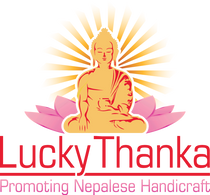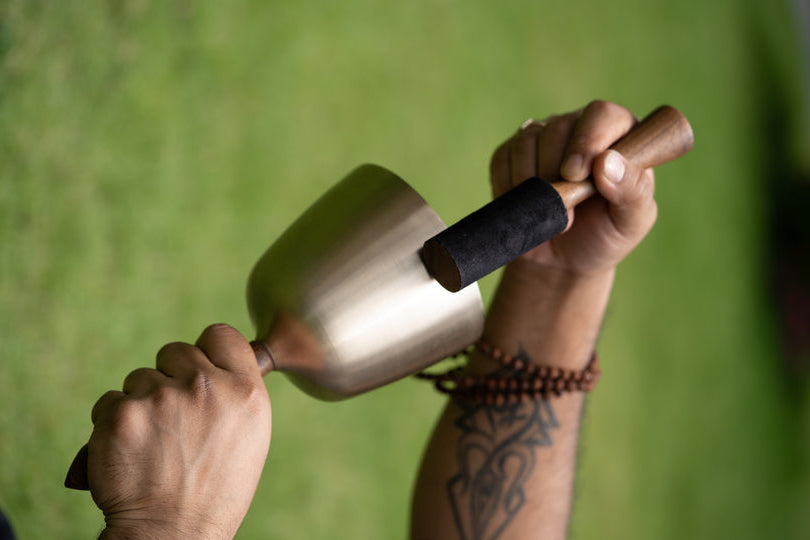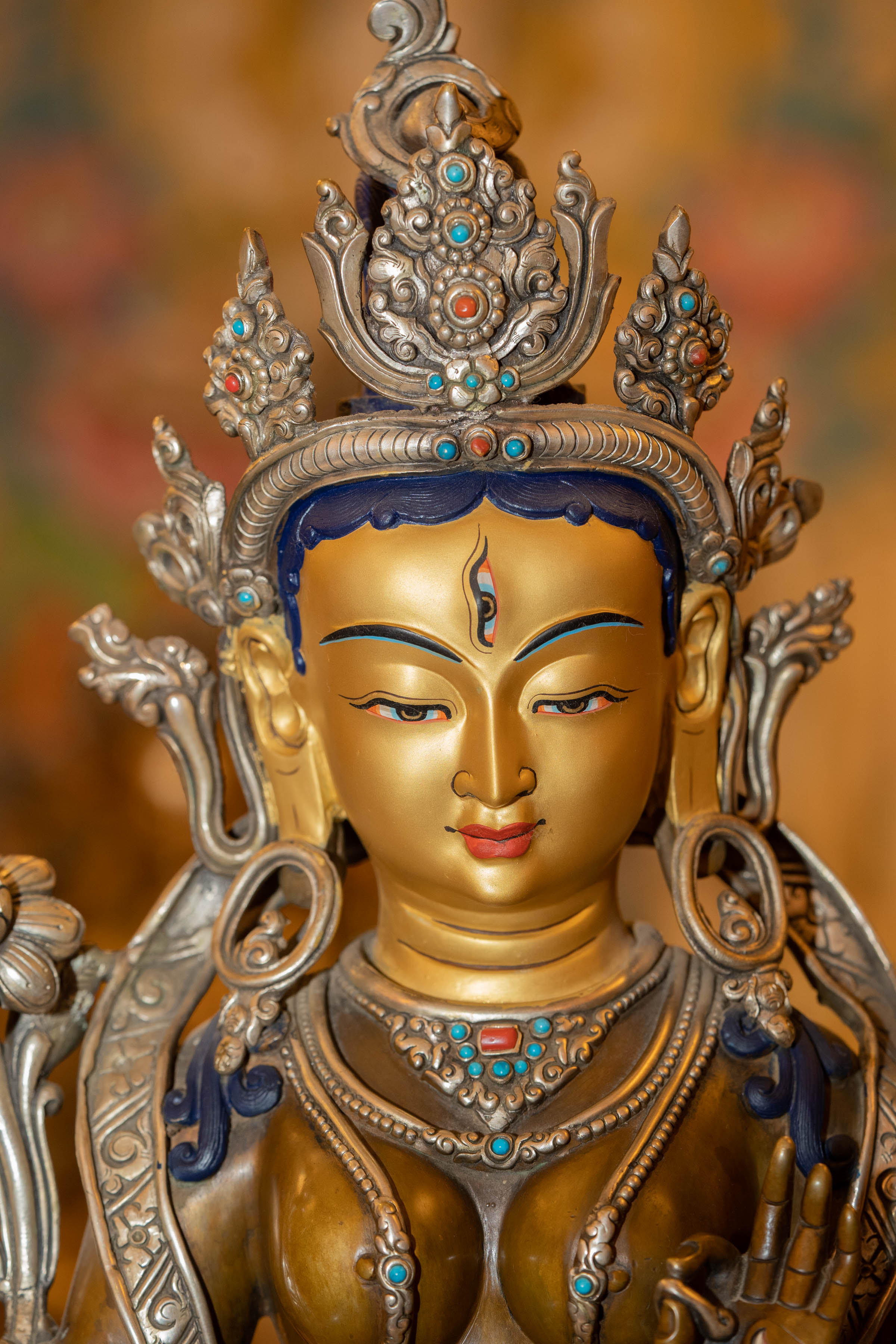Tibetan Thangka is a Nepalese art form exported to Tibet after Princess Bhrikuti of Nepal, a daughter of King Lichchavi and a wife of Sron Tsan Gampo. Generally, a Thangka is a Tibetan silk painting with embroidery, usually depicting a Buddhist deity, famous scene, or mandala of some sort. It is sometimes called a scroll-painting. There is also woodcarving basso-relievo Thangka.
Unlike an oil painting or acrylic painting, the thankga is not a flat creation, but consists of a painted or embroidered picture panel, over which a textile is mounted, and then over which is laid a cover, usually silk. Generally, thankgas last a very long time and retain much of their lustre, but because of their delicate nature, they have to be kept in dry places so as to prevent the quality of the silk from being affected by moisture.
The Tibetan Thangka, when created properly, perform several different functions. Originally, thangka painting became popular among traveling monks because the scroll paintings were easily rolled and transported from monastery to monastery. Images of deities can be used as important teaching tools when depicting the life (or lives) of the Buddha, describing historical events concerning important Lamas, or retelling myths associated with other deities and bodhisattvas. One popular subject is The Wheel of Life, which is a visual representation of the Abhidharma teachings (Art of Enlightenment). Devotional images act as the centerpiece during a ritual or ceremony and are often used as mediums through which one can offer prayers or make requests. Overall, and perhaps most importantly, religious art is used as a meditation tool to help bring one further down the path to enlightenment. The Buddhist Vajrayana practitioner uses a thanga image of their yidam, or meditation deity, as a guide, by visualizing “themselves as being that deity, thereby internalizing the Buddha qualities (Lipton, Ragnubs).”
To Buddhists these Tibetan religious paintings offer a beautiful manifestation of the divine, being both visually and mentally stimulating.
Historians note that Chinese painting had a profound influence on Tibetan painting in general. Starting from the 14th and 15th century, Tibetan painting had incorporated many elements from the Chinese, and during the 18th century, Chinese painting had a deep and far-stretched impact on Tibetan visual art. According to Giuseppe Tucci, by the time of the Qing Dynasty, "a new Tibetan art was then developed, which in a certain sense was a provincial echo of the Chinese 18th century's smooth ornate preciosity."
As an important Tibetan painting form, Thangka with a huge variety of styles, involves mastery of many demanding techniques: mastery in sketching the illustrations and numerous deities according to formal iconography rules laid down by generations of Tibetan masters; learning to grind and apply the paints, which are made from natural stone pigments; and learning to prepare and apply details in pure gold. From the canvas preparation and drawing of the subject, through to mixing and applying colors, decorating with gold, and mounting the finished work in brocade, the creation of a thangka painting involves skill and care at each stage and displays meticulous detail and exquisite artisanship.
Therefore, the process of learning to paint thangkas is rigorous. In the first three years, students learn to sketch the Tibetan Buddhist deities using precise grids dictated by scripture. The two years following are devoted to the techniques of grinding and applying the mineral colors and pure gold used in the paintings. In the sixth year, students study in detail the religious texts and scriptures used for the subject matter of their work. To become an accomplished thangka painter, at least ten years training is required under the constant supervision of a master. After the training process, students still need five to ten years to become experts in the field. Most importantly, Tibetan Thangka painting requires extended concentration, attention to detail, and knowledge of Buddhist philosophy, and must be carried out in a peaceful environment.



